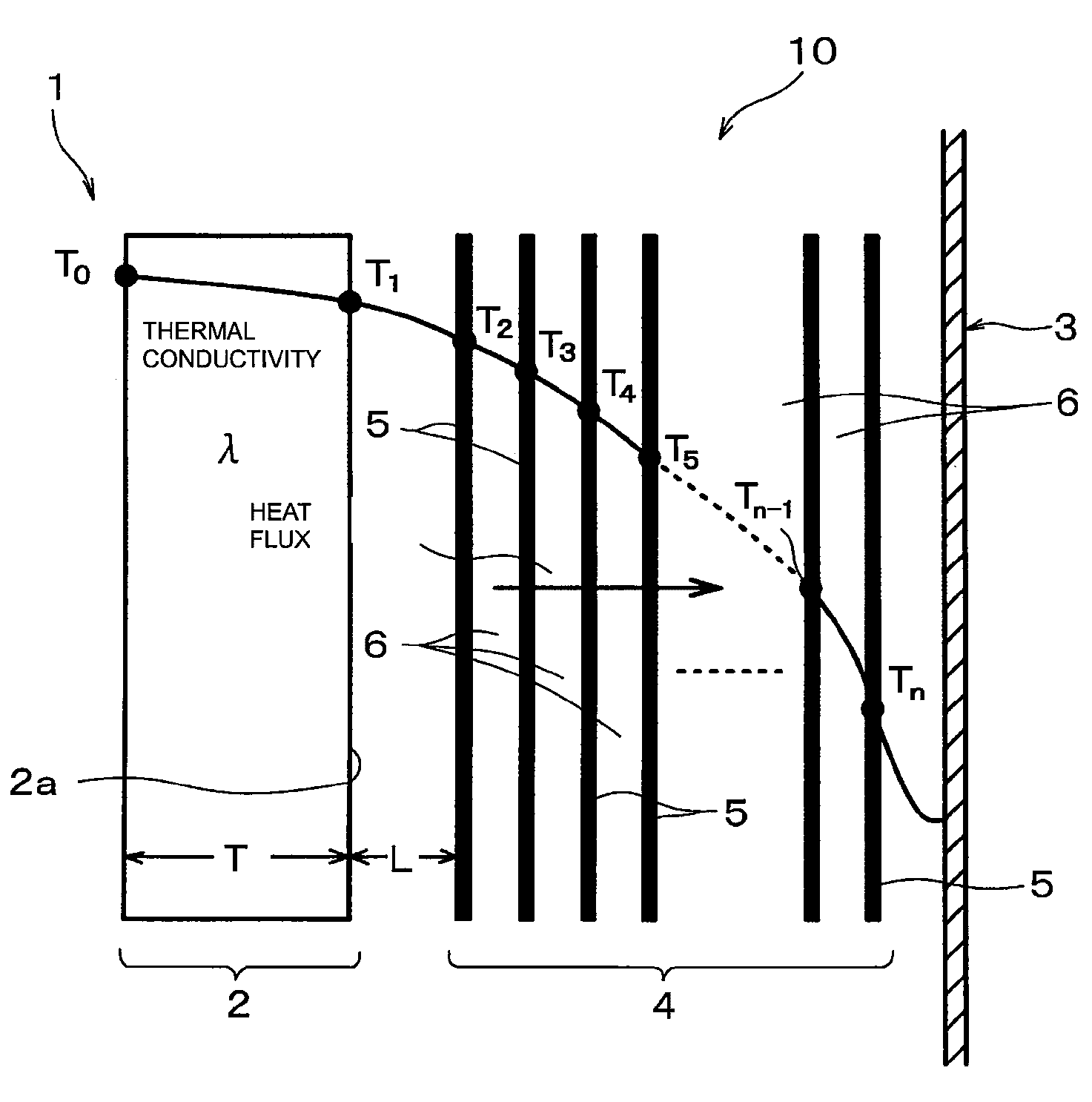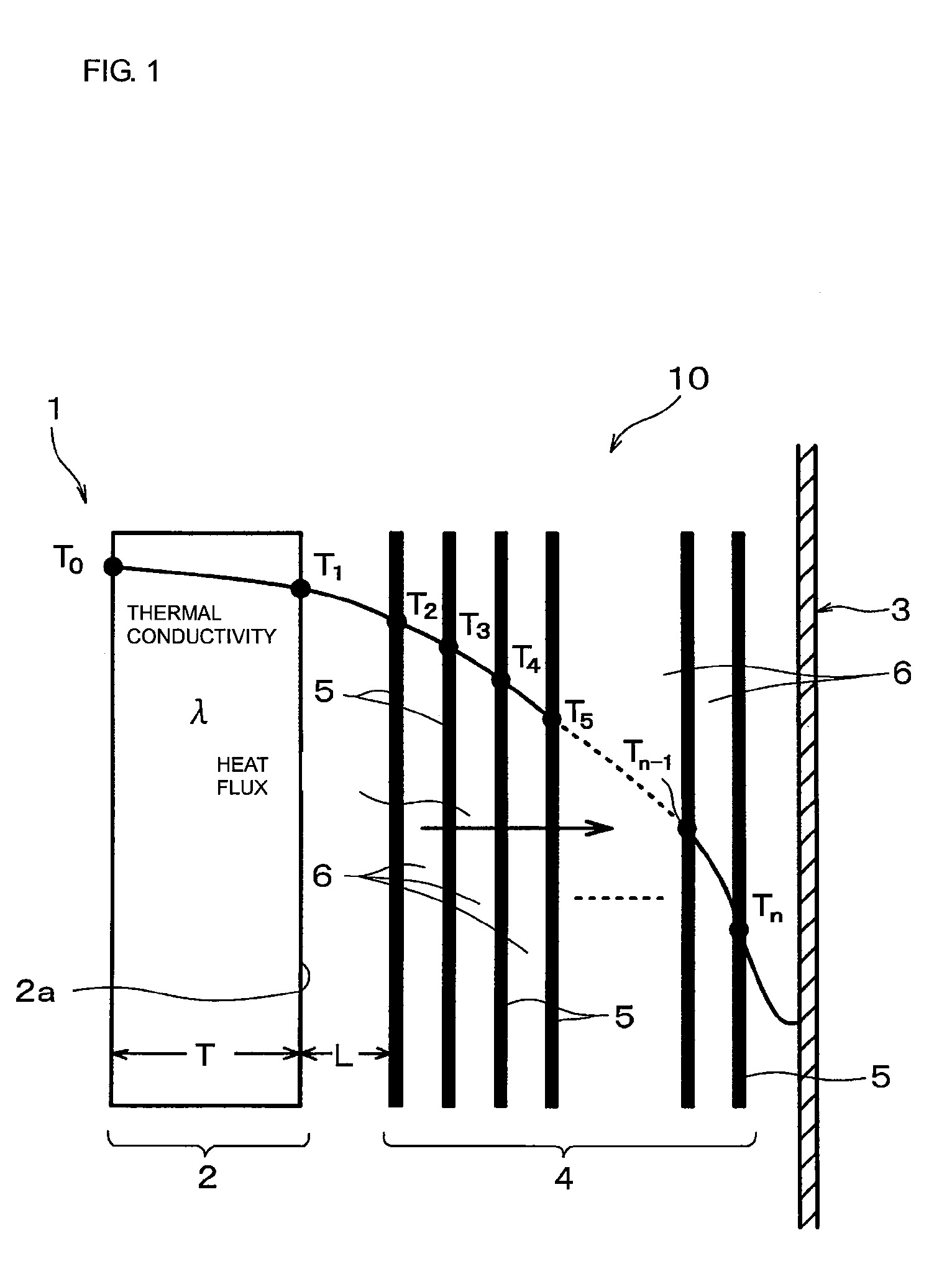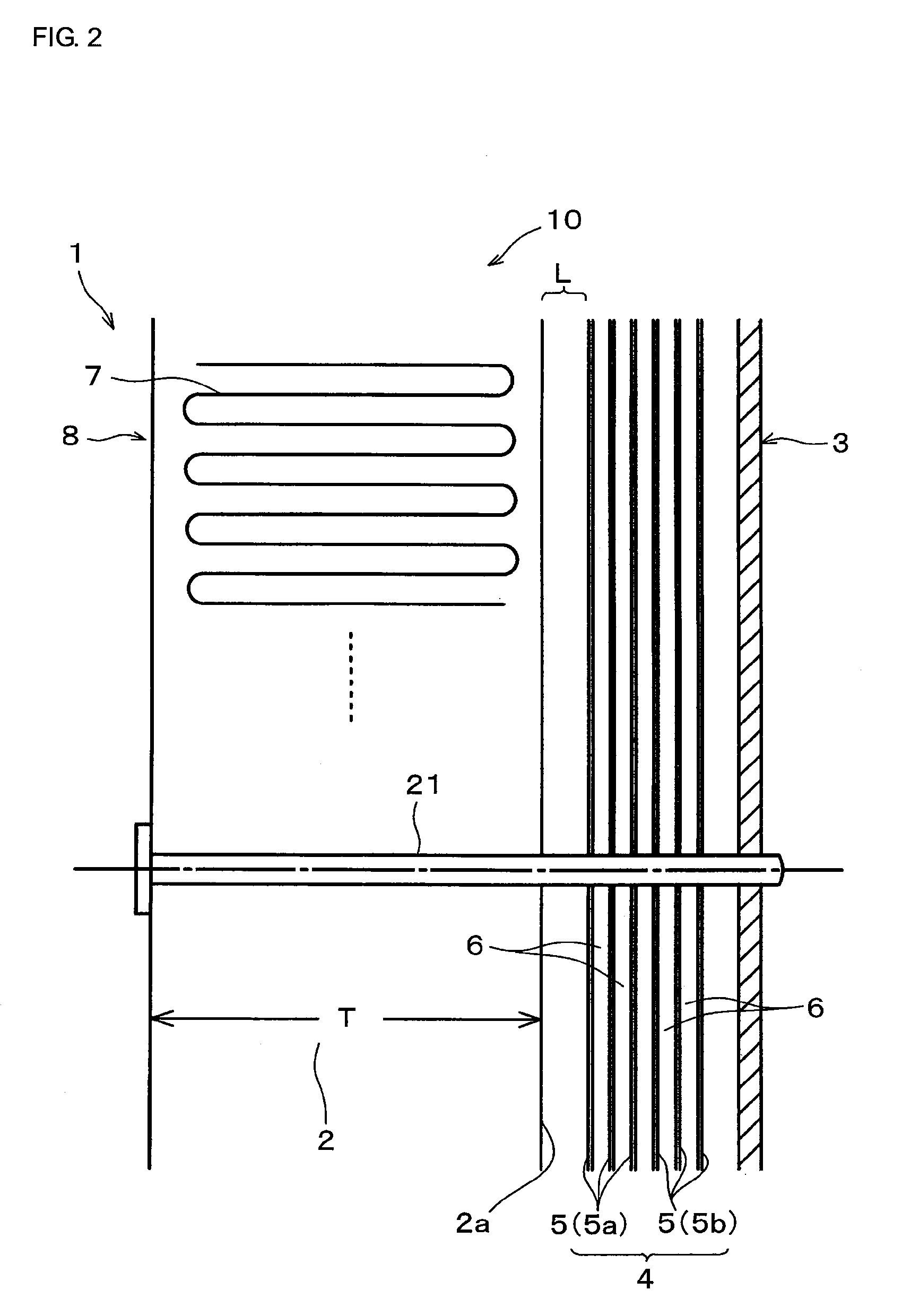Heat-treating furnace
a heat treatment furnace and heat treatment technology, applied in the field of heat treatment furnaces, can solve the problems of increasing equipment and cost, difficult to use for binder removal, limited operating conditions of the furnace, etc., and achieve the effect of optimum design for the operating conditions, and preventing peeling and breakage of the heat insulator
- Summary
- Abstract
- Description
- Claims
- Application Information
AI Technical Summary
Benefits of technology
Problems solved by technology
Method used
Image
Examples
embodiment 1
[0089]FIGS. 2 to 4 are drawings each showing a configuration of a heat treating furnace according to an embodiment (Embodiment 1). FIG. 2 is a sectional view showing a principal configuration. FIG. 3 is a sectional front view schematically showing a configuration of a heat treating furnace. FIG. 4 is a sectional plan view schematically showing a configuration of a heat treating furnace.
[0090]A heat treating furnace 10 is one for continuously performing a degreasing step and a sintering step for a ceramic laminate for a ceramic multilayer substrate using low-temperature sinterable ceramic green sheets. A material to be heat-treated by the heat treating furnace is a ceramic laminate prepared by laminating thin ceramic green sheets and contains about 20% by weight of a binder.
[0091]As schematically shown in FIG. 2, the heat treating furnace used in Embodiment 1 includes a case 3 provided with a heat treatment region 1 for receiving therein the material to be heat-treated and a front do...
embodiment 2
[0105]FIG. 5 is a drawing showing a principal portion of a heat treating furnace according to another embodiment (Embodiment 2).
[0106]In the heat treating furnace of Embodiment 2, partition heat insulators 12a and 12b are disposed on both the upper and lower sides of the spaces between the plurality of thin plates 5, which constitute a reflector 4, so as to be substantially parallel to the upper side 15 and the lower side 16 of the thin plates 5, for suppressing the passage of gas between the respective thin plates 5. The other configuration is the same as in the heat treating surface of Embodiment 1.
[0107]In FIG. 5, the portion denoted by the same reference numeral as in FIGS. 1 to 4 is the same as or corresponds to FIGS. 1 to 4.
[0108]As in the heat treating furnace of Embodiment 2, when partition heat insulators 12a and 12b are disposed on the upper and lower sides of the spaces between the plurality of thin plates 5, which constitute a reflector 4, so as to be substantially paral...
PUM
| Property | Measurement | Unit |
|---|---|---|
| temperature | aaaaa | aaaaa |
| temperature | aaaaa | aaaaa |
| temperature | aaaaa | aaaaa |
Abstract
Description
Claims
Application Information
 Login to View More
Login to View More - R&D
- Intellectual Property
- Life Sciences
- Materials
- Tech Scout
- Unparalleled Data Quality
- Higher Quality Content
- 60% Fewer Hallucinations
Browse by: Latest US Patents, China's latest patents, Technical Efficacy Thesaurus, Application Domain, Technology Topic, Popular Technical Reports.
© 2025 PatSnap. All rights reserved.Legal|Privacy policy|Modern Slavery Act Transparency Statement|Sitemap|About US| Contact US: help@patsnap.com



